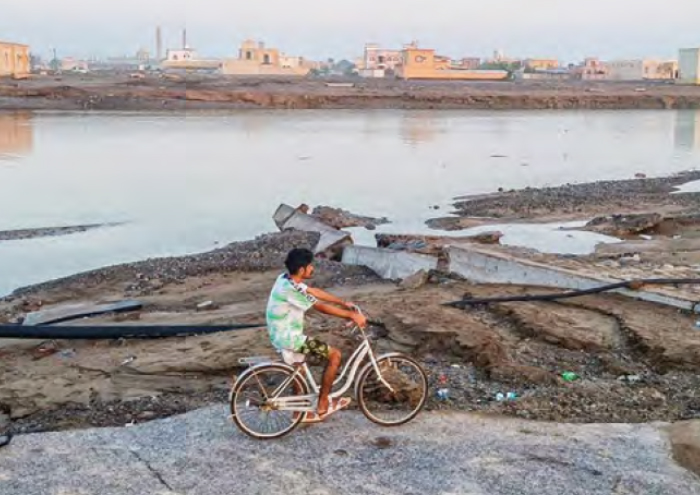
Muscat: An important road link connecting two key coastal villages in Wilayat Khabourah in North Al Batinah will be made permanent, after a temporary linkage between the two settlements was constructed post-Cyclone Shaheen.
Khabourah Municipality confirmed that the road connecting Qasabiyat Al Zaab and Qasabiyat Al Hawasna would be rebuilt in accordance with the reconstruction efforts after Cyclone Shaheen, making sure to incorporate infrastructure that would help the rebuilt roads withstand the impact of future natural disasters.
“The current road that is built is temporary, and several drains have been built to make sure that the water that flows from the nearby wadis does not flood the road, but flows out of it freely,” explained Hassan Al Barmani, the director of the Municipal Affairs Department at Khabourah.
“There is a committee formed that is headed by the Ministry of Defence, and it features a number of representatives from other government bodies, including the municipal sector from the Ministry of Interior, the Ministry of Transport, Communications and Information Technology, the Ministry of Housing and Urban Planning, the Environment Authority, and other relevant units,” he said.
It is this committee that studies sites affected by Cyclone Shaheen, including the eight agreed-upon sites in the impacted zones in the wilayats of Khabourah, Suwaiq, and Saham.
“It was agreed that the site would be prepared and re-paved after installing the necessary protections made from concrete on the sides of the future road,” he explained. “The current road is only in place until the site for the new coastal road is studied by the relevant authorities.”
A tender for the road in question – which will connect the two villages – was put forward to private sector companies involved in road construction, so that the structural designs for the new linkage could be drawn up. It is currently under review by the municipalities and joint committee, and the revised designs are to be approved soon once they have been submitted.
Khabourah native Moath Al Saeedi was among those whose homes were affected by Cyclone Shaheen, which badly damaged several areas in northern Oman in October 2021. Water surged into his house, forcing his family and him to climb onto the roof in the face of gale-force winds and torrential rain. They were without help for several hours, as Shaheen had cut off internet and phone connectivity to the entire region.
Like hundreds of other families, Moath’s also suffered severe damage to their vehicles and other personal effects.
“The wadi flows through here very quickly, and sometimes uproots trees and damages asphalt roads,” he said. “It carries with it any fixed object it encounters, such as street lights, animals, and even cars,” he added. “If the wadi flows at such strength again, it will once again affect all of us, and I am afraid the pipes that are supposed to take the water away will not do so, because the vegetation carried by the wadi will block them.”
“It would be most helpful if we had a bridge made of concrete, so that the wadi can flow underneath easily,” he added.
Another inhabitant of the area, Sajid Al Hosani, added that the new road being planned would need to take into consideration several factors, such as the tides, and the strong flow of water from the nearby wadi.
“This area is affected by high tide, because it is near the beach, as well as unpredictable flow of water from what is considered one of the strongest wadis in the area,” he said.
“The best solution, I feel, would be to construct a bridge linking the two villages, to allow both sea water and runoff from the wadis to pass safely underneath. This will also help protect people’s lives and property, he further added.